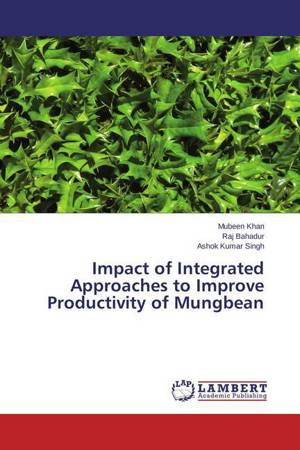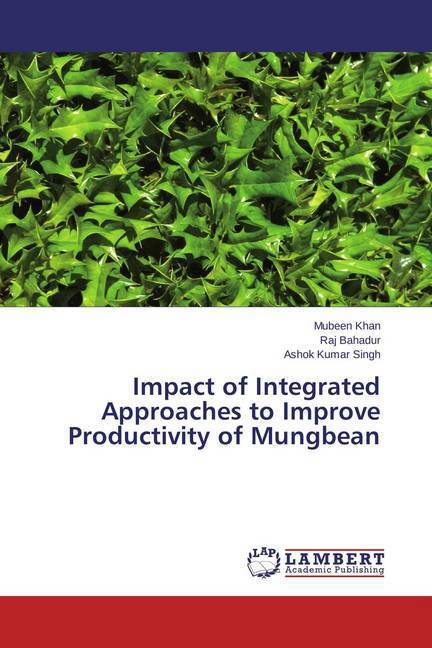
- Afhalen na 1 uur in een winkel met voorraad
- Gratis thuislevering in België vanaf € 30
- Ruim aanbod met 7 miljoen producten
- Afhalen na 1 uur in een winkel met voorraad
- Gratis thuislevering in België vanaf € 30
- Ruim aanbod met 7 miljoen producten
Zoeken
Impact of Integrated Approaches to Improve Productivity of Mungbean
Mubeen Khan, Raj Bahadur, Ashok K. Singh
Paperback | Engels
€ 54,95
+ 109 punten
Omschrijving
Mung bean (Vigna radiata L. wilezek) is an important food legume which belongs to the family, Fabaceae (Leguminaceae) and sub family Papilionaceae is extensively grown in humid to arid and semi-arid regions. The ability of Rhizobium bacteria to fix nitrogen from the air (N2) in symbiosis with legumes, huge natural source of nitrogen from the air can be taken up from this symbiotic association. This ability leads to decrease or absence of nitrogen mineral fertilizer application in the field. Therefore, there is need to explore the potential of rhizobia as legume inoculants under agro climatic conditions. Foliar application of NAA is able to control flower drop and improve the flower and fruit setting, nodulation, number of pods per plant, seed yield and harvest index in mungbean with the inoculation of Rhizobium along with NPK application. Inspite of growth regulators spray of certain chemical like potassium nitrate has been reported to play significant role in sources-sink relationship and ultimately increase the harvest index.
Specificaties
Betrokkenen
- Auteur(s):
- Uitgeverij:
Inhoud
- Aantal bladzijden:
- 92
- Taal:
- Engels
Eigenschappen
- Productcode (EAN):
- 9783659717635
- Verschijningsdatum:
- 2/10/2015
- Uitvoering:
- Paperback
- Afmetingen:
- 150 mm x 220 mm
- Gewicht:
- 145 g

Alleen bij Standaard Boekhandel
+ 109 punten op je klantenkaart van Standaard Boekhandel
Beoordelingen
We publiceren alleen reviews die voldoen aan de voorwaarden voor reviews. Bekijk onze voorwaarden voor reviews.








